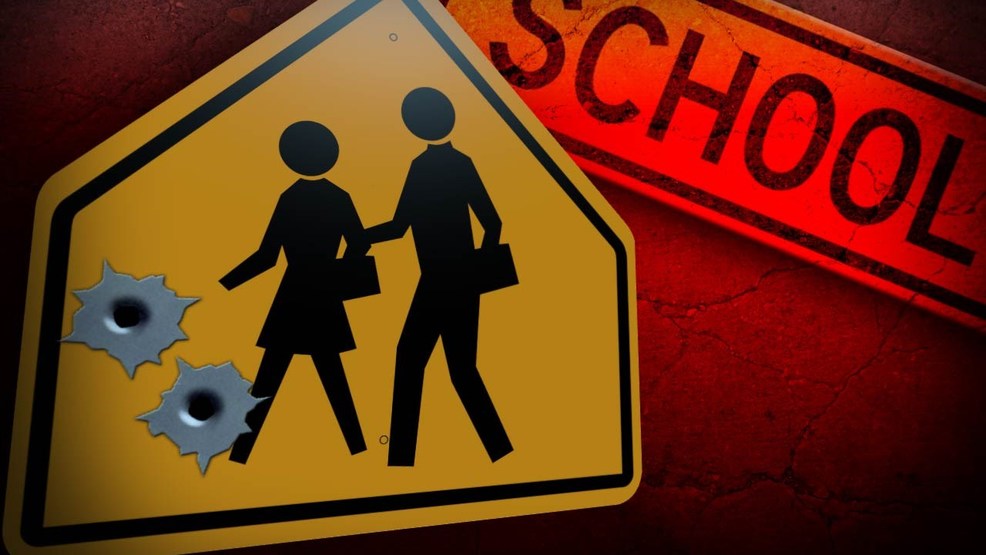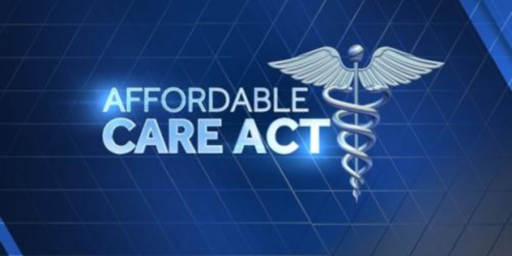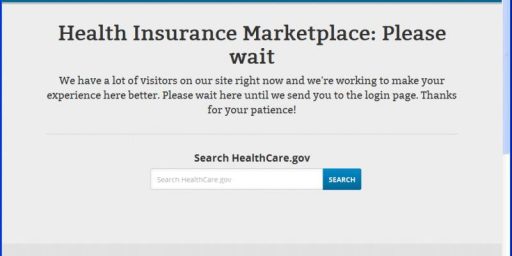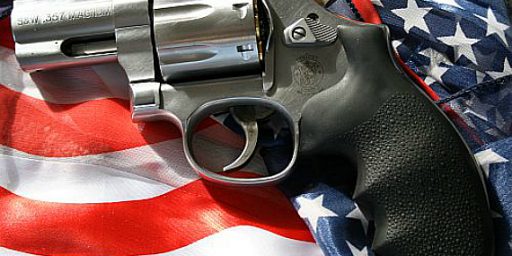Efforts To Arm School Teachers Run Up Against A Problem: Insurance Companies
In the end, it may be insurance companies that have the biggest voice in the debate over arming teachers.

In the wake of the shooting at Marjory Stoneman Douglas High School last February, conservatives once again jumped on the idea of arming teachers as a solution. In response, several jurisdictions in predominately Republican states moved to allow teachers or other school personnel to carry weapons on school premises. Now, though, that effort may be running into a significant roadblock that could make it hard for the movement to expand:
Kansas has a problem: It has a law allowing teachers to carry guns in the classroom, but almost no schools are using it because insurance companies refuse to provide coverage if they do. As EMC Insurance, the largest insurer of schools in Kansas, explained in a letter to its agents, the company “has concluded that concealed handguns on school premises poses a heightened liability risk.”
Then came the Parkland, Florida, school shooting in February, leading frustrated Republican legislators in Kansas to try forcing the issue with a bill banning “unfair, discriminatory” rates for schools that arm staff. The insurance industry held firm. Last month, the bill failed.
“I don’t think insurance companies are notorious anti-gun liberals,” said Mark Tallman, associate executive director for the Kansas Association of School Boards, “so we think they’ve got good reasons for not doing it.”
As proposals to arm teachers sweep across the nation, insurance companies are being forced to weigh the risks of these controversial plans. Some insurers are balking. Some are agreeing to provide policies but lamenting the lack of evidence about whether it makes schools safer – or increases the chances of people getting shot. Others are raising rates.
“There’s not a lot of carriers that want to insure that risk,” Nate Walker, a senior vice president at insurer AmWINS Group.
The reaction of insurance companies is notable because they are supposed to evaluate dangers through the dry eye of actuarial science, largely avoiding the heated emotions of the nation’s gun debate, in which one side condemns guns and the other side claims, as Texas Lt. Gov. Dan Patrick, R, did last week, that the best way to stop a bad person with a gun is a good person with a gun.
“But an even better way,” Patrick added, “is four people with a gun to stop that person.”
Insurance companies are not so certain, worried more guns in schools might not only fail to stop mass shootings but lead to more accidents.
The epidemic of mass shootings in schools and other public venues has put new pressure on the insurance industry to take a stand. They face huge potential liabilities from these tragedies. The 2017 Las Vegas shooting, where a gunman fatally shot 58 people, could cost insurers more than $1 billion, including potential lawsuits and covering lost business income from the incident and its fallout, according to the International Risk Management Institute.
Schools turn to insurers for liability protection to cover them if there is an accident or someone gets hurts because of negligence.
Insurers are always looking for ways to minimize risk. It’s why companies that cover schools send out notices about even small dangers such as the tripping hazards of extension cords or warnings about hanging classroom decorations from ceiling lights.
Adding trained police officers to schools is generally viewed favorably, industry officials say. But giving guns to school janitors or history teachers – even with some training – raises concerns.
“Putting in more resource officers – that’s additional security – we feel that makes it safer,” said Paul Marshall, of McGowan Program Administrators. “It’s different when you start pushing it to arming teachers, volunteers, voluntary security.”
Marshall has a particular interest in ways to prevent school shootings because his company sells “active shooter” insurance policies. It’s a newer line of coverage that has gained popularity as schools look at ways to grapple with the risk of mass shootings on their campuses. The policies pay for counseling services and victim death benefits.
The fact that insurance companies that provide insurance to schools are raising rates for districts where teachers and other personnel not affiliated with law enforcement isn’t surprising. As a rule, these companies tend to be conservative, not so much in the political sense but in the sense that they approach situations with the idea that they want to minimize risk as much as possible and putting people with at best a minimal amount of training in the middle of a school with a loaded weapon is quite obviously a risky situation. Even if mass shooting events are a rarity, and despite how it seems they generally are, the potential liability that a school district could face in such a situation could easily run into seven-digit figures. Additionally, the presence of a loaded weapon in a classroom carries with it rather obvious risks that any insurance company would obviously be concerned about. Because of that, it’s only logical that they would either raise the premiums they charge to school districts that allow people who aren’t trained law enforcement officers to carry weapons on campus or to deny coverage altogether.
In recent years, the National Rifle Association has sought to get around the increasing unwillingness of insurance companies to provide insurance to individual gun owners and to school districts who allow teachers and others to carry weapons, but that program has run into problems of its own in the wake of the movement to get companies to rescind their affiliations with the organization. Most recently, for example, Lloyds of London withdrew from the program last month. Additionally, regulators in New York have fined Chubb $1.3 million for its participation in the NRA program due to the fact that it was allegedly violating New York law by providing insurance to gun owners. This, in turn, has led many other insurers to back out of the program altogether in the face of either public backlash for their affiliation with the N.R.A. or regulatory action such as what is going on in New York. Because of that, the N.R.A. program has apparently largely collapsed and in any case does not seem to be an adequate replacement for school districts seeking insurance coverage. All of this means that the number of companies willing to provide this kind of coverage is becoming smaller, which means that rates are likely to go up. In a world where budgetary issues are at the top of the list for school districts, that could prove to be decisive.






For the benefit of gun nuts: this is not ‘libruls’ taking away your guns, this is capitalism in the form of insurance companies deciding you people aren’t worth the risk. You create risk, they don’t want to cover you.
And just note how weak the NRA ‘stick’ is in all this. They may intimidate pols, but they don’t mean squat to business – the whole gun industry isn’t a pimple on the backside of the American economy. It accounts for 0.0007% of GDP, about the same as Starbucks. Apple could buy the entire US gun industry and shut it down overnight and it would barely figure in Tim Cook’s annual report.
We’ve seen again and again that Right-wing boycotts are ignored while Left-wing boycotts and criticisms are instantly responded to, usually by abject surrender. Business has decided right-wingers are not the future. They’d like to please everyone, but if they have to choose, they go Left.
@michael reynolds: actually, it’s because Left wing boycotts often result in violence.
It’s the fear factor.
No one likes to see their employees or customers physically threatened or assaulted.
Be careful there, Doug.
The Current Narrative is that school shootings occur at least once a week.
The Current Narrative is that school shootings occur at least once a week.
Your narrative is that school shootings are OK no matter how often they occur as long as zealots can fondle their guns.
Banks, minimarts, and many other businesses are quite strict about having their employees not armed and not engaging armed miscreants. Arming teachers is a b.s. attempt at distraction. The outcomes of murders attacking police stations and military installations show the ridiculousness of arming people. I will take this stuff seriously when we legalize carrying arms in Congress and the White House. John Hinckley Jr. seriously wounded four people while taking on a group of highly trained and armed professional security people.
The Current Narrative is that school shootings occur at least once a week.
Your narrative is that school shootings are OK no matter how often they occur as long as zealots can fondle their guns.
The NRA should put their money where their mouth is and start insuring the schools. After all, if they’re right and arming teachers reducing risk, they should obviously be able to do it far more cheaply than the competing insurers insisting on unarmed teachers and would totally not bankrupt themselves with increased settlements that are the actual result of such a policy.
@TM01:
Are you really being flippant about school shootings? Whatever point you are trying to make you still come off sounding like a callous putz. I am sure you are aware of the saying think before you speak, well apply this saying to when you want to post on a blog…count to 10 so you have chance to ask yourself if it is a good idea to hit Post Comment or if you are better served just moving on to tackle whatever else the day has in store for you.
Money talks, bullshit walks. Such is the way of this world.
People like TM01 can whine all they want how “the left” is intimidating people but the cold hard math of actuarial work is a resounding hell no to armed teachers. It’s why HR frowns on drinking on work premises even during parties and why bringing guns into the office will get you shown the door PDQ. You cannot have employees engaging in a possible danger endeavor without having the risk of disaster increase unacceptably. The chances of something going wrong with an armed employee in the course of a “normal” day are astronomically higher then them needing to stop an active shooter. Plain old math and it’s bastard child, finances will render this unfeasible.
Now, if the NRA wants to offer insurance to school teachers and assume the risks and liabilities inherent to such a venture, then by all means. Put your money where your mouth is, literally. It’s a lucrative market to them, no? Shouldn’t they be jumping in to fill the gap as capitalism demands instead of making socialist demands? Could it be that they realized there’s no profit in having to actually pay out on the deaths they dismiss?
@TM01:
Yep, it was violent threats that got Roseanne thrown off TV. Mobs of furious lefties, crisis actors, antifa, globalists, illuminati, commies, and of course pizza parlor sex wardens, threatened to massacre everyone at Disney.
Face reality dude: whatever revolution you thought was coming in the social order? That faint hope is dead. The cruel reality is that as much as you think liberals look down their noses at people like you, this is the money boys coming to the same conclusion that you and your ilk are the past.
It’s a simple matter of math.
School shootings are rare. So if you put guns in classrooms, the odds are they’ll cause several injuries and deaths through accident and misuse every month.. Add to that expense the costs of defending against the inevitable lawsuits, and the liability is pretty big.
But with Czar Trumpsky, who knows. He may decree insurers MUST offer the greatest coverage in the world without raising their rates. Or he may appropriate several billions he doesn’t have to grant all schools government insurance, then urge Congress to pass a law to limit payments for gun deaths or injuries at schools to $99.95
Once again, private sector insurance company leftist-socialist actuarial staff thwart free market weaponry advocates, go figure.
Whoa! Didn’t see THAT coming. [/snark]
@TM01: Do you get paid for this blatant stupidity? Obviously not near enough.
Really? That’s so weird. Wonder why people have that perception.
To be sure, mass shootings are much more common than school shootings, which is not exactly a pro-NRA admission.